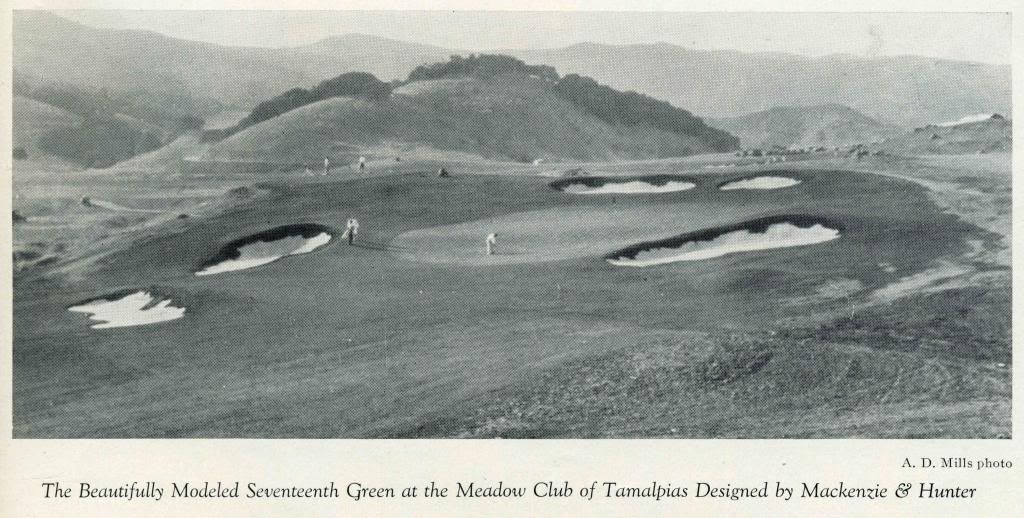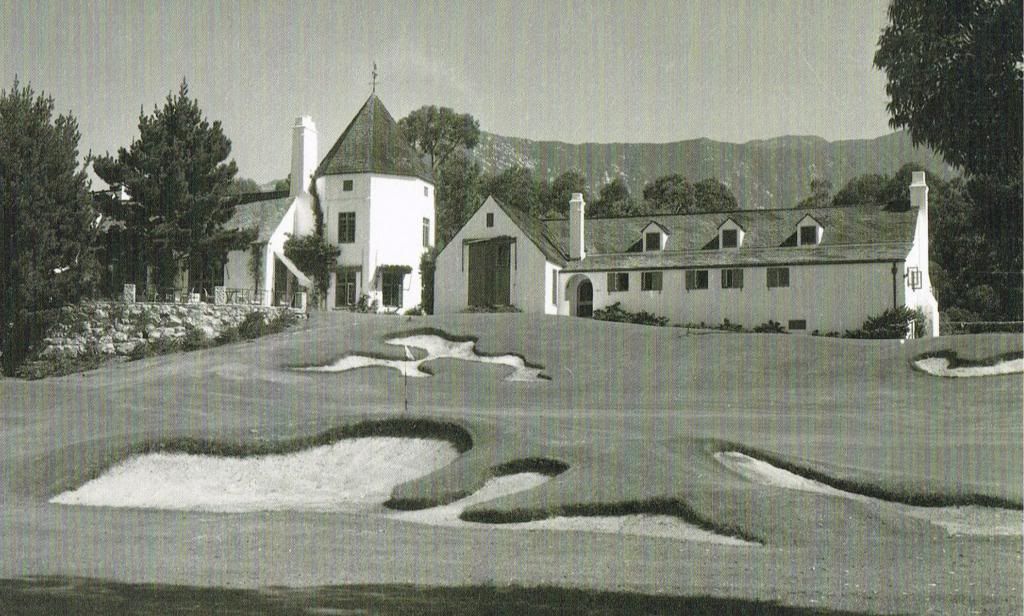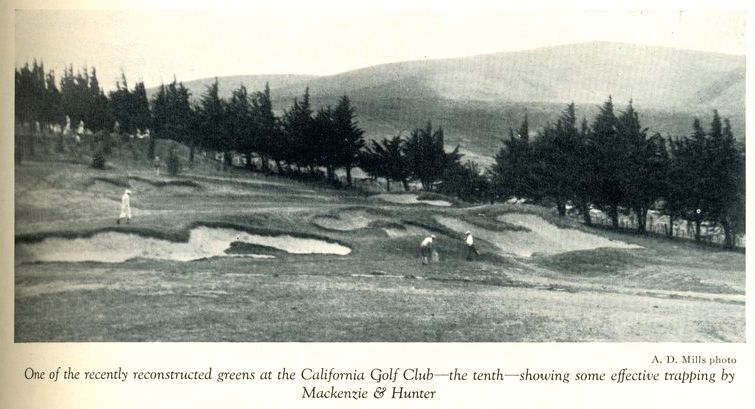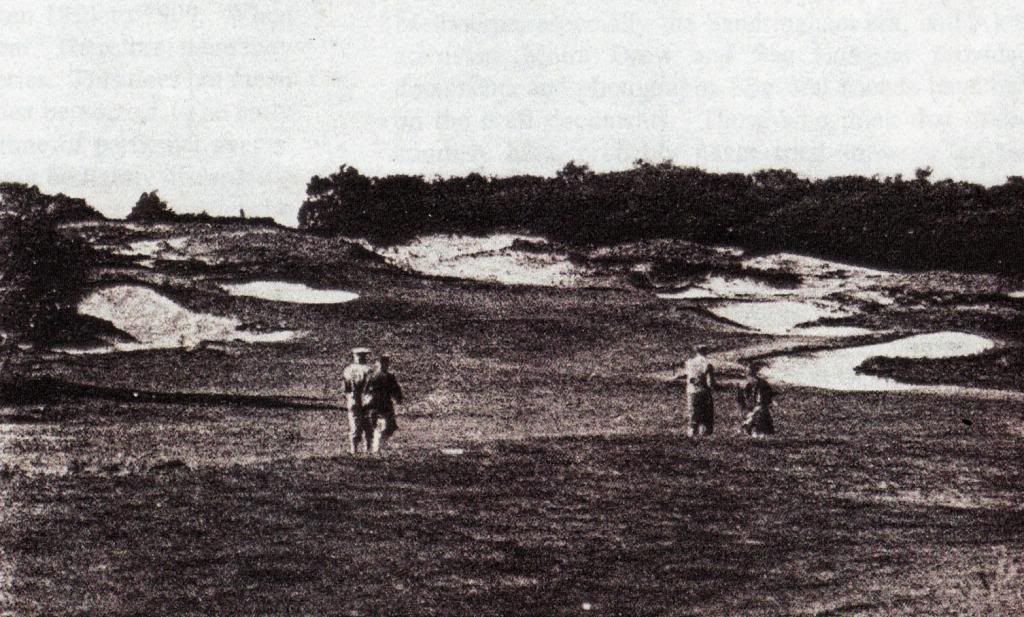I've only just stumbled onto this thread, as the title of the thread says nothing at all about what the thread is about. Before I make any comments, could I ask this of Pat - please can you put what the thread is about in your title rather than the obscure half sentences that you are currently doing? Thankyou.
It is an interesting thread topic and it's not easy to give a definitive answer to what Pat has posed.
Pat has pulled out various references from our Chronology to Mackenzie visiting the US, the first of these was early in 1926. Why did he visit? For work foremost, as Robert Hunter had indicated he could get projects there for him, and secondly, Mackenzie was no doubt curious about America, its capitalist system and its sheer size.
Mackenzie's early work around Leeds, primarily Alwoodley and Moortown, saw the genesis of his bunkering style. These two courses in particular were delightfully natural looking, while others were rather artificial, such as some of his bunkering at Headingley. By the time of the First war, Mackenzie had completed a lot of work and had a lot about to start which the war put a stop to. After the war's end, he put out his little green book "Golf Architecture" which was based on lectures given before the war and contained pretty much photographs of his pre war work, with the exception I think of some shots of Grange-over-Sands in construction, which was a post war project.

Would architects in the US have seen his book in the early 20s? Given the dearth of books on this subject I'm confident that the answer would be yes. certainly Alex Russell had a copy, as did H L Rymill, to name two Australian architects, although Russell did not begin his career until Mackenzie's arrival later in 1926. Certainly Rymill was active and influenced by the book. I imagine some US architects were too.
Post WW1, Mackenzie's bunkering evolved somewhat, as you would expect, and perhaps there was more of an influence from his camouflage experiences during that war as well. generally though, my take is that Mackenzie's post WW1 bunkering style in the UK was more a cape and bay style than a 'frilly' style. Perhaps that has something to do with his constructors and that he was doing a lot of work where he struggled to give his projects the attention they perhaps deserved, especially in the 1920 to 1924 period when he was exceptionally busy. Perhaps the bunkers were simplified somewhat as a result.
Post WW1 Mac bunkering at Morecambe in the UK

But the first bunkers coming out of the Mackenzie and Hunter partnership in America, those at the Meadow Club, are quite unique in all of Mackenzie's work in my view, and they look different to the frilly bunkers that Bell and Thomas were doing. The shapes were generally ovoid/elongated with smallish undulating frills, with few if any large capes or bays.

This style was different again from the style utilised at the Valley Club, also Mackenzie and Hunter, and different again from the Cypress Point bunkers.
Valley Club bunkering 18th

Lake Merced's bunkering was somewhat different again, as was California GC.


As Tom correctly points out, Mackenzie imported Irish foremen and bunker men, names such as Jack Fleming, Dan Gormley, Paddy Cole and Michael McDonagh, to work for the American Golf Course Construction that he, his brother Charles and Robert Hunter set up to build the Californian courses. Hunter's son, Robert Jr was the managing director.
Mackenzie was in Australia in late 1926, but the bunkers built there, mostly by Morcom and Russell, were different again. This is the earliest known photograph of the 5th at Royal Melbourne West. No frills in sight.

This bears out what I think is important, that Mackenzie was not wedded to one particular look for every bunker everywhere, rather he went with the flow to some degree, allowing his partners to give some input and influence in this regard.
So the question is I guess, did Mackenzie copy what he saw the architects in California doing with bunkers? Was he influenced at all by them? We know he met on site at Riviera with Bell and Thomas while he was in LA in February 1926, so he certainly saw what they were up to. I don't believe he copied them. Did they copy him? I doubt it, but they would have been influenced to some degree by photos of some of Mackenzie's pre war UK work. Hunter's book The Links came out in 1926 and Thomas's book a year later, both included photos and drawings of Mackenzie's work.
My conclusions are:
1. Mackenzie had no consistent "Californian" style with his bunkering, all his Cal courses have bunkering that are different in some way or another.
2. He did not copy what other architects might have done before he arrived in California.
3. He was influenced to some degree by Robert Hunter, who as his partner "on the spot", had day to day oversight of the bunkering and other constructional aspects built by the AGCCCo's Irish constructors.
4. Whatever lacy/frilly style developed in Cal prior to 1926 grew somewhat independent of Mackenzie, but in response to the desire for natural looking courses with less artificiality, so its no surprise really that these sorts of eroded bunker edges came from that desire for naturalness.